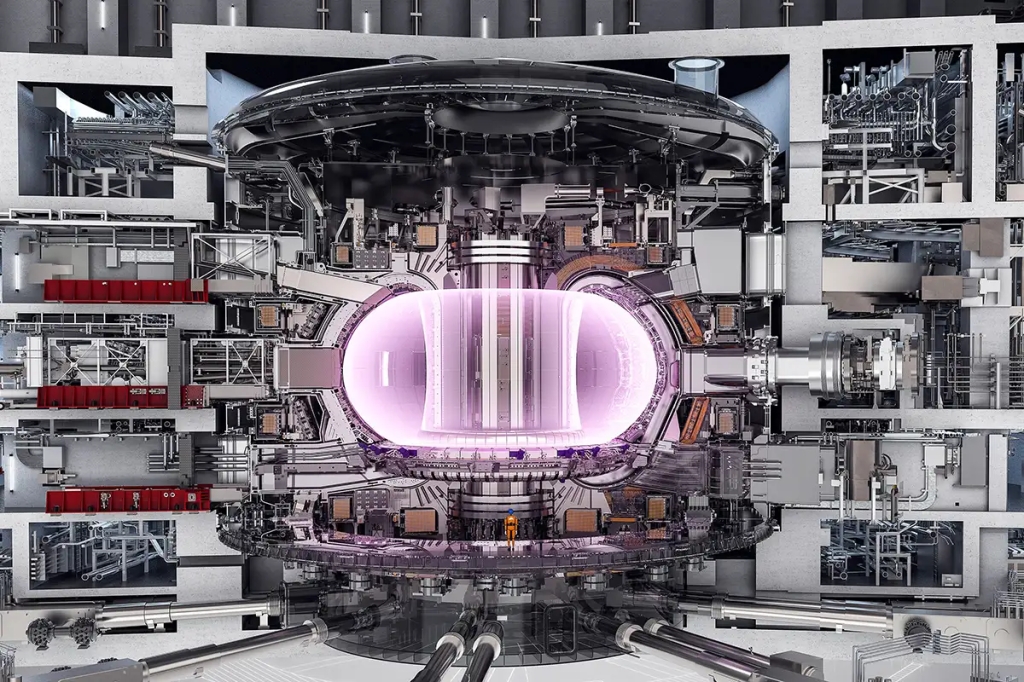We hear it all the time: Fusion is the future; it’s how the sun creates energy. But, how does it work? At its core, fusion generates energy by converting four hydrogen atoms (protons) into 1 helium atom with two neutrons (Helium-4 ). On the surface, it is hard to see how any energy is created from this process. We know that one proton and one neutron have about 1 AMU of mass, and those savvy with their laws of physics know that matter and energy cannot be created or destroyed—So how does this process seem to “generate” energy?
In reality, 1 helium atom is a tiny bit (0.047E-27 kg) less massive than 4 protons. This “missing
mass is not gone, but released from the reaction as energy. Einstein taught us that mass is equivalent to energy (E = mc^2) at a fundamental level, so this is where the energy from fusion comes from. Because c^2 is a very large constant, ~9E16, a tiny amount of mass is converted to a large amount of energy. This is how the sun produces the massive amount of energy that we see radiating on us everyday. It is also why fusion has been very hard to replicate here on earth; the temperatures and pressures present in the core of the sun and required for fusion are so intense that they are very difficult to create here on Earth. But, that does not stop us from trying.

Leave a comment